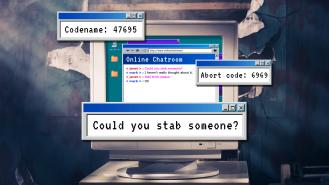
How stalkers use new technology to terrorise their victims
Modern technology has made many aspects of life things so much easier. But it’s also emboldened stalkers, who deploy both software and hardware to track and terrorise their victims. So what kind of tech has been weaponised?
Tracking devices
Once the stuff of spy movies, tiny tracking devices have become a popular solution for those of us with a tendency to misplace wallets and car keys. The most well-known example is the Apple AirTag, a coin-shaped tracker that can be discreetly placed pretty much anywhere. Other Bluetooth trackers include the Galaxy SmartTag, Tile Pro and Jiobit all with different specifications and features.
These Bluetooth trackers broadcast a signal which is picked up by any nearby devices, such as mobile phones, allowing the owner to triangulate its location using via an app or computer programme. Handy if you left your laptop bag on the train, or your purse on the beach. But also handy if you want to know exactly where someone is, without them realising.
In January 2022, Sports Illustrated swimsuit model Brooks Nader went public with her disturbing experience. While walking alone after a night out, her phone abruptly alerted her to the fact she had a tracker on her person. ‘The owner can see its location,’ the message ominously said.
It turned out a complete stranger had slipped an Apple AirTag in her coat pocket, presumably while she was in a restaurant several hours earlier. She’d been tracked ever since, and the stalker had come close to ascertaining where she lived.
While Bluetooth trackers do have security features, such as phone alerts and the ability to emit a beeping sound when the device has been away from its owner after a certain number of hours, there are still concerns over misuse. A recent investigation by Vice uncovered numerous horror stories of people being tracked by ex-partners and possessive husbands, many on multiple occasions.
Apple with its AirTags has come in for particular scrutiny because of its status as one of the world’s biggest tech behemoths. ‘Apple’s global device network gives AirTags unique power to stalk around the world,’ surveillance expert Albert Fox Cahn said in an interview with Vice. ‘Apple’s massive marketing campaign has helped highlight this type of technology to stalkers and abusers who’d never otherwise know about it.
Stalkerware
Stalkerware generally refers to malicious spyware secretly installed on your phone. But the term can also be applied to legitimate, mainstream apps that may be used to surreptitiously track your movements.
Purpose-built stalkerware can be installed with alarming ease. Speaking to the MIT Technology Review, one victim recalled how monitoring software entered her phone when she opened a picture message from a guy she was dating. He was then able to see all her online activity, including chats with other people.
There have also been instances of men – and it is usually men – utilising child safety and monitoring apps for nefarious purposes. These apps are easily downloadable from the App Store and Google Play and are intended for parents wanting to keep tabs on what their kids are doing online. Of course, such software can just as easily be used to digitally eavesdrop on adults.
What’s more, even an app as innocuous as Google Maps can be transformed into a stalking tool. Someone with access to your phone – for example, an overly-possessive partner – might secretly go into your Maps settings and enable location sharing with their own device, with you remaining oblivious for some time.
According to a recent survey by cybersecurity firm Kaspersky, 11% of people polled in the UK said they felt it was acceptable to track partners without their consent. Speaking about the findings to the tech site ZDNET, Kaspersky researcher David Emm pointed out that ‘people might not necessarily consider themselves to be a stalker when digitally prying, unlike in the old days, when you would have to follow someone… The ease of doing it might take some of the realization away that such behaviour is wrong.’
Social media
The social media revolution has provided ample opportunities for stalkers and trolls to target people all over the world. Doxxing – the malicious sharing of people’s personal information, such as their real names and addresses – has been a particularly concerning phenomenon in recent years. Whole communities of online bullies and stalkers have even coalesced with the express intention of doxxing and harassing their victims.
A recent example of one such toxic community is Kiwi Farms, a forum whose users would gleefully mock, harass, dox and terrorise minorities, trans people and anyone else they despised.
One Kiwi Farms target has been the Canadian trans activist and Twitch streamer Clara Sorrenti, aka Keffals. Hoax calls made to law enforcement led to armed police being dispatched to her home to arrest her – a practice known as ‘swatting’. Eventually forced to move to a hotel, she posted a photo of her room to let fans know she was OK – but this allowed the Kiwi Farms trolls to dox and harass her again (incredibly, they’d deduced where she was by looking up the bedspread designs used by hotels in her area).
Sorrenti is just one of many Kiwi Farms victims, and the vicious campaigns run by the site are thought to have directly led to at least three suicides. Though the site has since been blocked online, the trolls themselves aren’t going away anytime soon. As online activist Charlotte Laws pointed out in a recent interview with The Hill, It’s like a seesaw, you push it down in one spot, but bam, it just pops up on the other side. People can get very angry when they’re silenced, and it makes them more ferocious in their views.’










